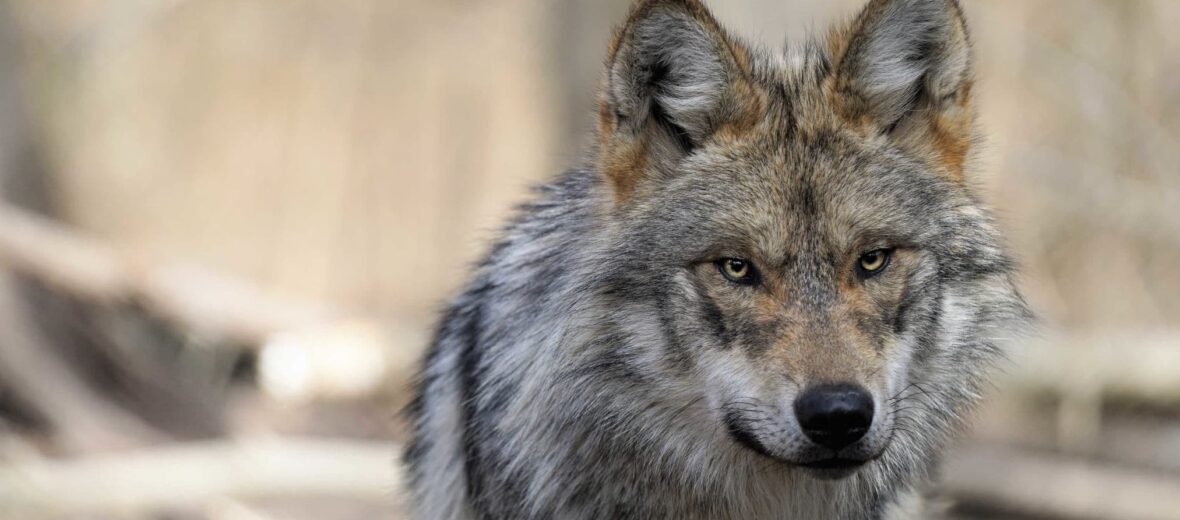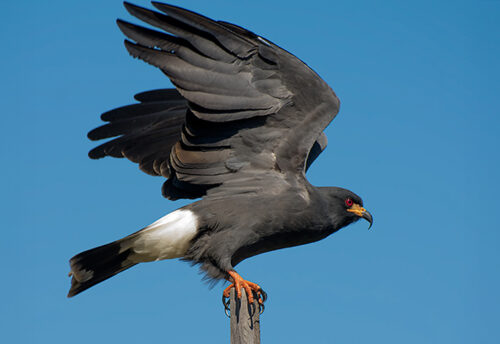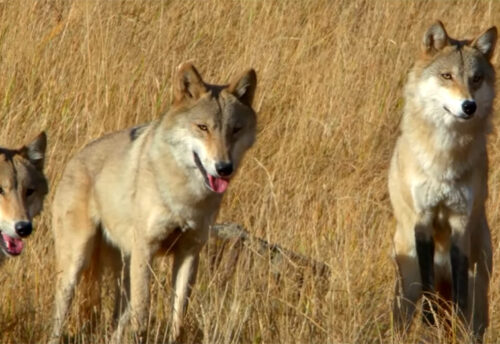
The Mexican grey wolf is considered Critically Endangered by the IUCN. Only 115 Mexican gray wolves live in the wild and about 300 exist in captivity. Campaigns of poisoning and trapping in the early to mid 1900s nearly caused them to go extinct. Even though their numbers have been slowly increasing, they are still the most endangered subspecies of wolf in the entire world due to compromised genetics, humans not wanting to tolerate them, and a hesitance to release more individuals and bonded pairs into the wild.
First the Stats…
Scientific name: Canis lupus baileyi
Weight: Up to 180 lbs.
Length: Up to 6.6 feet
Height: Up to 2.7 feet
Lifespan: Up to 8 years
Now on to the Facts!
1.) These wolves eat white-tailed deer, mule deer, elk, and occasionally smaller mammals like ground squirrels, rabbits, hares, and mice.
2.) They communicate via howling, yipping, growling, tail wagging, playing, and marking territory with urine.
3.) It was recently discovered that wolves actually form packs based on a family dynamic, not an alpha, beta, omega dynamic. They hunt and play together as a family unit. Not a military-based structure. It was previously thought that there is an alpha wolf that dominates over the subordinates. This isn’t true in nature, at all.
4.) Only the dominant female is allowed to give birth to pups, aka whelps. The others in the pack help raise the young by bringing them food and teaching them skills for survival.
5.) Wolves patrol an area of 30 – 500 square miles!
But wait, there’s more on the Mexican grey wolf!
6.) In regions where their prey is larger, their packs are also larger, 30 +/-. In regions where the prey consists of smaller species of animals the packs are much smaller, at around 7 +/-.
7.) These grey wolves don’t sleep in groups, like many believe. They actually sleep right out in the open, regardless of the weather conditions.
Did you know…?
Mexican gray wolves typically eat just 2x a week. But, when they do, they eat up to 20 lbs. of meat in 1 sitting!
8.) Another name for the Mexican wolf is “Lobo”.
9.) Mexican wolves are monogamous (mate for life).
10.) The dominant female, or bitch, gives birth to 4 – 7 pups, between February – March.
Now a Short Mexican Grey Wolf Video!
Also, check out the Critter Science YouTube channel. Videos added frequently!
Want to suggest a critter for me to write about? Let me know here.



